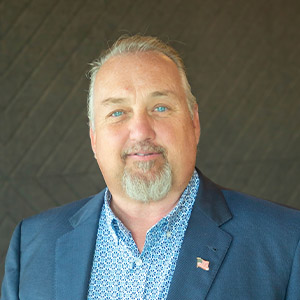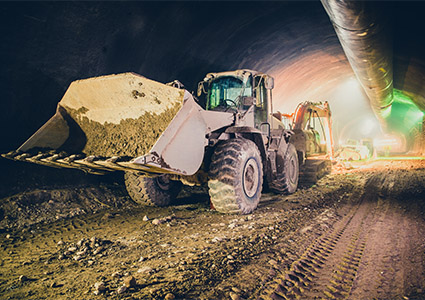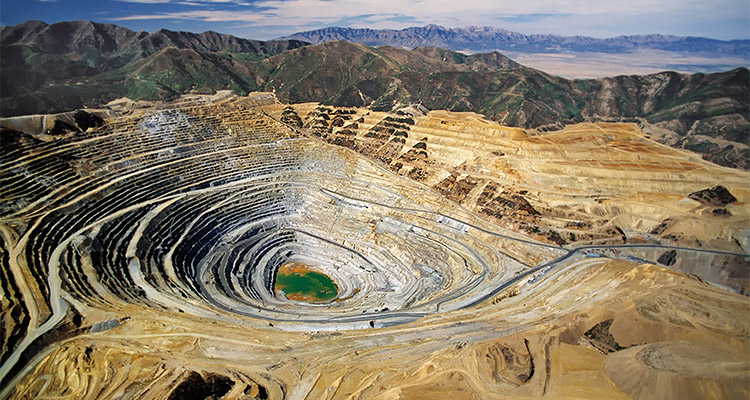David Rogers, Director for Mining, Minerals, and Metals, on how Schneider Electric bridges the industry’s gap between the past and the future
Schneider Electric is a global specialist in energy management and industry automation across more than 100 countries. As the need for critical minerals continues to grow around the world, Schneider is increasingly innovating strategic solutions for the mining industry.
With an interesting career background spanning sales, procurement, and electrical contracting, David Rogers is well equipped in his current role as Director for Mining, Minerals, and Metals at Schneider Electric. “I’ve sat at various seats around the negotiation table throughout my career,” David begins. “I started my career in purchasing as a commodities buyer, before deciding to return to school to train as an electrician. I later became an electrical contractor, then went back into procurement as an estimator for a few large corporations including a federal government contractor.

“I worked for one of the largest mining corporations in the world for around 11 years, where I was responsible for electrical automation and software procurement. I then received an offer from Schneider to help with the company’s mining and metals accounts. Looking back, it seems as though each door opened plenty of opportunities for subsequent doors, and I feel lucky to have gained experience in multiple roles, as I can easily understand the requirements and perspectives of other colleagues and customers.”
Speaking about the company more generally, David continues: “Schneider is an old corporation with roots in mining and metals. The Schneider brothers initially started the company in France in the 1830s by mining iron ore to make steel, including making tanks during the world wars, and over the next 150 years, it gradually grew into the electrical company we are today. As one of the largest electrical manufacturers on a global scale, we have a foothold in almost every country and a particularly strong presence in the US.
“Our products range from traditional electrical products to apps, analytics tools, automation, and software control devices. However, despite phenomenal growth, we’ve never lost sight of where we came from as we transitioned into an electrical company, and we’re still heavily involved in the mining industry.
“Schneider is currently experiencing some reorganization, and my role is changing slightly as a result. Historically, I have helped to identify strategic accounts in the mining and metals space across North America, leveraging opportunities to accelerate their automation and digital acuity, whereas I will focus more specifically on the US going forward. This restructuring will help bring us closer to our customers, enabling such a global organization to be more intimate within each country. I currently lead a team of ten individuals, and we’re ready to take advantage of the market as critical minerals become increasingly important in the US.”
Continuing this topic, we ask David how the US can stay competitive in the current global landscape. “There are several things the US has done that have some unintended positive consequences for mining companies,” David shares. “The CHIPS Act to bring semiconductor manufacturing back to the US and the Inflation Reduction Act, for example, both have aspects that unintentionally impact the mining and metals industry.
“However, there are still improvements to be made. Our permitting processes are antiquated, for instance, meaning it takes a long time for new mining companies to come online. Our perception of the industry also needs to change. We must educate people on where their essential products come from to emphasize how important mining is and that if done correctly and sustainably, mining and metals don’t need to be the enemy!
“It’s an interesting time in the US as our government transitions once again. Trump understands the value chain of where products come from, and I think he will appreciate the abundance of materials here in the US that haven’t yet been brought to market. We need a leader to bring the industry’s systems out of the 1800s and into the 2000s with more responsible mining operations!”
Steps towards a more sustainable future
Turning to sustainability, David is keen to share how Schneider is supporting companies with reducing emissions across a mine’s lifecycle. “We’ve recently launched a new program, Materialize, which empowers leading critical resource and materials companies to reduce Scope 3 emissions by guiding their suppliers to implement decarbonization strategies,” he explains. “Scope 1 and 2 emissions are much easier to address in comparison to Scope 3, so Materialize will help our clients identify their heaviest carbon or greenhouse gas emitters across the supply chain
“As the world transitions to net-zero emissions, demand for minerals and metals is set to grow exponentially. To meet such demand without furthering carbon emissions, companies must decarbonize power supply, mitigate the environmental impact of energy-intensive processes, and reduce the sector’s Scope 3 emissions.
Leveraging technology
“Digitization and automation, particularly AI and machine learning, are also key concepts that support sustainability strategies, as they can help us do more with less,” David elaborates. “These technologies can help extend a machine’s life or productivity, for instance, while AI can drive improved efficiency. While we’re one of the world leaders in machine learning and AI packages, perhaps our biggest strongpoint is data. We don’t just provide data, but instead create data that’s actionable, allowing clients to make real-time, data-driven decisions.”
However, David is under no illusion that there are still barriers to decarbonization in several sectors, including mining. “From an operational perspective, the largest outgoings on a mine site are hydrocarbons and utility bills,” he states. “As the energy transition continues, we need to help companies electrify sites to reduce emissions and hydrocarbons by implementing either microgrids or waste heat recovery processes. 
“Schneider is a world leader in microgrid installation, and AlphaStruxure, our partnership with The Carlyle Group, sees us build microgrids across the US. For customers who aren’t willing or not capable of investing the initial capital required to install a microgrid, we also offer a service model through our EcoStruxure business. We can even act as consultants, advising on emissions reduction and providing progress reports.”
As our conversation ends, discussion turns to what’s next for the mining industry. “2025 looks bright for mining in general, with ongoing discussion about energy transformation resulting in increased demand for electrification, automation, and digitization, which are all strong areas for Schneider,” David says. “There could be some headwinds though, as many budgetary proposals over the last couple of years have now increased based on the lack of raw materials and global supply chain constraints. We’re also seeing large mining companies acquiring smaller players as they look to diversify their portfolios.
“However, Schneider is committed to helping companies do more with less. By implementing digitization technologies like automation and AI, we can drive improved efficiencies and reduce some budgets in preparation for strong years in 2026 and 2027.
“We’re about to see a tsunami of need for critical minerals, with experts predicting that we’ll need double the amount of critical minerals and metals over the next five-to-ten years,” David concludes. “Instead of doubling mining operations, existing companies must work smarter to get commodities out into the market, and Schneider will undoubtedly be there to provide innovative solutions that boost our customers’ efficiency. ”
